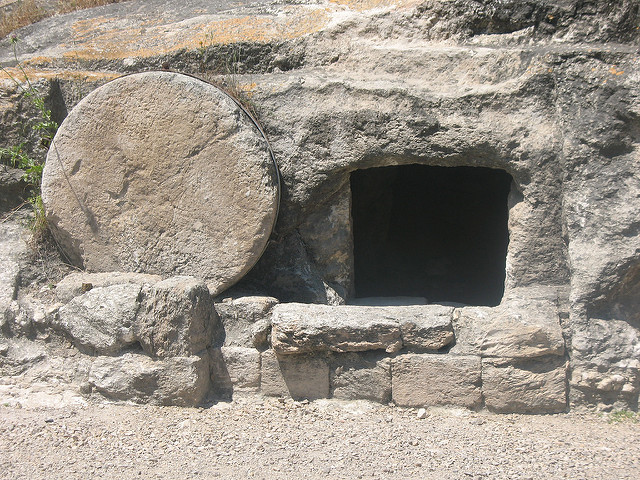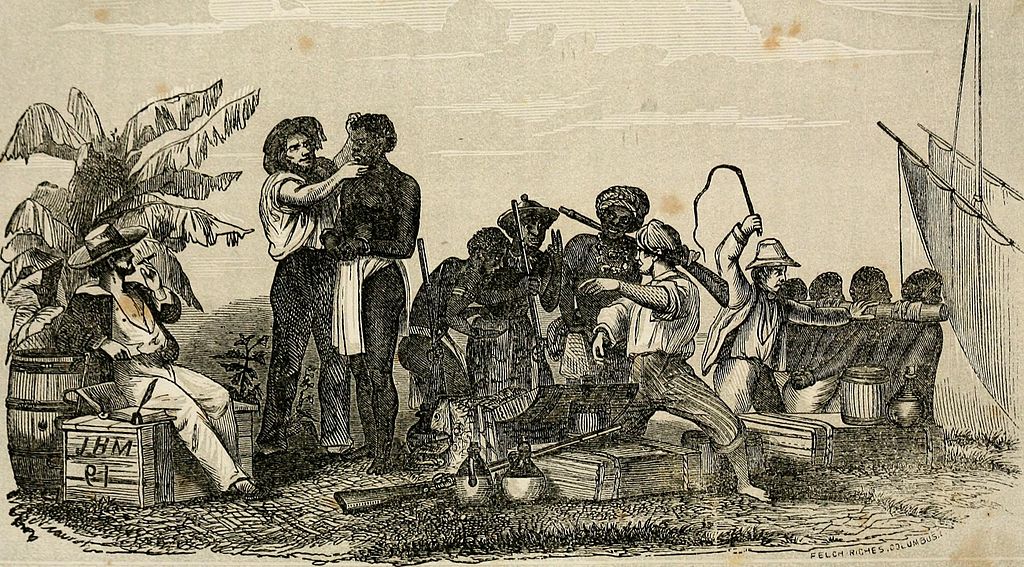Did Jesus Really Rise From The Dead?
With all of the preparations for Easter season, I thought it would be a great time to talk about the historical event that separates Christianity from all other religions; the resurrection of Jesus of Nazareth.
The Resurrection of Jesus is the single most important event in Christianity. If Jesus doesn’t come back from the dead, then he was just another Jewish wise man who performed miracles. Even miracle men weren’t unheard of back then.
Christians believe that Jesus died for our sins and his resurrection is what tells us he was who he said he was. Paul lays this argument out pretty early on in 1 Corinthians 15:16-20
16 For if the dead are not raised, not even Christ has been raised. 17 And if Christ has not been raised, your faith is futile and you are still in your sins. 18 Then those also who have fallen asleep in Christ have perished. 19 If in Christ we have hope[a] in this life only, we are of all people most to be pitied. 20 But in fact Christ has been raised from the dead, the firstfruits of those who have fallen asleep.
Paul tells the Corinthians that if the dead cannot be raised, then Jesus couldn’t have been raised. And if Jesus hasn’t been raised then they are still living in their sin and have not been forgiven. And anyone who has died already has done so without being forgiven.
Here’s the hard truth; if Paul and everyone else who has been preaching the Gospel has gotten it wrong, then we’re all a bunch of fools and have put our faith in the wrong thing. We are to be pitied! If someone finds the bones of Jesus, then 2000 years of Christian teaching have got it all wrong and wasted a lot of peoples’ time. If Jesus didn’t come back from the dead, then he wasn’t the God Man, we are all still living in sin, and doomed to an eternity of torment after we die. Or it’s just The End.
Now, many other religions are established without such an event. They are mostly based on the teaching of wise sages and great thinkers. But, they are all experiential. Most people come to believe in them through inner experiences. Like Obi Wan told Luke, their followers are told to “search your feelings, you know it to be true”.
Most Christians are no different. We hear a message, read the Bible, and feel what we are being told is true. Muslims are told to pray to Allah and ask if the Qu’ran is true. Mormons are told to read the Book of Mormon, and if they feel a “burning in the bosom” then that’s God telling them that Mormonism is true.
So, if religions have an experiential component, how can we tell which one is true? They can’t all be right. They all have different messages and worldviews. That’s where the Resurrection comes in. Christianity has the tie-breaker in the Resurrection. It was an historical event that was observed and documented. A wise man appeared in Palestine, performed miracles, claimed to be God, predicted his own death, said he would come back to life, and then did so – appearing to multitudes of people.
How do we know these historic events occurred? The primary accounts of Jesus’ life are the Gospels. There are a slew of reasons we should trust these writings as historical documents. J. Warner Wallace has a great article on why we should view the Gospel authors as trustworthy eyewitnesses that’s worth reading as well.
The New Testament isn’t the only place that mentions the events of Jesus’ life. We actually have more references from non-believers about the events of his persecution, death and later appearances than we do Christians ones.
Gary Habermas is considered one of the foremost authorities on the Resurrection. He has studied over 3500 articles on the topic since the 1970s and has determined that there are several facts that almost every scholar – Christian, secular or otherwise – will agree upon. We are going to talk about three today; the crucifixion event, the empty tomb, and the sightings of Jesus after his death. In one of his talks on the subject, Tim Barnett puts it in a way that’s easy to remember; the cross contained a dead body, the tomb contained no body, and lots of people saw some body.
The Cross Contained A Dead Body
Let’s get one thing clear; the Romans knew how to kill people. The crucifixion process was designed to do that slowly. First, they would whip you with a flagrum or scourge. These devices had many lashes coming out of one end and balls of metal woven into the lashes. At the end of the balls were either bits of bone or more metal sharpened to somewhat of a point. The idea was that when the balls hit you it would cause bruising and then the points would tear at your flesh, causing excruciating pain. This process often tore flesh from bone, leave muscles, nerves and bone exposed.
Next, after being beaten to near death, the victim was tied to a heavy cross beam and forced to carry it down the street to the crucifixion site. Once there, nails were driven into the wrist. Some depictions have holes Jesus’ hands, but this is inaccurate. Nails through the hand were not strong enough to support the weight of the body when it was suspended on the cross. Driving the nail between the two bones of the wrist provided the proper support. Nails were also driven through the feet.
The idea of crucifixion was that, in order to take a deep breath, you had to push up with your feet, thus causing extreme pain. Then, you would sag back down, unable to take a full breath unless you pushed up again. Keep in mind that Jesus’ back had been whipped raw earlier. So, as he would have been pushing up and down to breathe, his raw back would be rubbing on the wood behind him. Eventually, the victim would become exhausted, no longer able to take a breath and suffocate.
Like I said, the Romans knew how to kill people. They knew the difference between a body that was unconscious and one that was dead. And, just to be on the safe side, they shoved a spear between Jesus’ ribs and punctured his heart to make sure he was dead.
In his Gospel, John recorded what happened when this was done “But one of the soldiers pierced his side with a spear, and at once there came out blood and water” (John 19:34 ESV). He had no idea what that meant, but doctors today do. Because of the extreme shock Jesus’ body was in, fluid had gathered in the membranes around his heart and lungs. This is called pericardial effusion for the heart, and pleural effusion for the lungs.
When the Roman soldier pierced Jesus’ side with the spear, this fluid is what came out. Also of note, the piercing was usually done a few hours after it looked like you were dead. The soldiers knew that if they let a body off of a cross that was still alive, it would be their turn to be flogged and hung. They were going to do everything they could to make sure dead was dead.
The Tomb Contained No Body
After Jesus died, his body was taken by Joseph of Arimathea, a member of the Jewish Sanhedrin (High Council) and man named Nicodemus. They prepared the body with spices, wrapped it in linen and placed it in a tomb owned by Joseph of Arimathea that had never been used before. After Jesus’ body was placed in the tomb, they rolled a stone in front of it.
The next day, the Jewish high priests went to Pilate and asked for the tomb to be secured because Jesus had been predicting his resurrection before he died. This was not an uncommon thing in ancient times. Alexander The Great “predicted” he would rise from the dead, thus proving his godliness. He plotted with his friends to have his body removed from his tomb after he died to make this prediction come true. The high priests knew what was at stake here and wanted to make sure no conspiracy could take place.
Pilate told the priests to have the tomb sealed, to take a guard and place them in front of the tomb. It’s important to note here that “a guard” is not a single person. A Roman guard was a highly trained 16 man unit who upheld their duty for fear of death. If a man fell asleep while on duty, he was executed. And so was the rest of his guard. So, they were highly motivated to do their job.
The greatest piece of evidence for the empty tomb comes from documented eyewitness testimony from people who saw the tomb was empty – specifically Mary Magdalene and “the other Mary”. The fact that it was women who are recorded as the eyewitnesses is even more powerful given the culture of the time. They didn’t trust the testimony of women. This comes from the Talmud:
These are considered unfit [witnesses]: gamblers with dice, those that lend with interest, pigeon racers, those who trade in the produce of the Sabbatical year, and slaves. This is the rule: all testimony that a woman is not fit to give, these [above] are also not fit to give. (Rosh Hashanah 1:8)
Women were only permitted to testify to things “they knew about” – like cultural practices, places only women frequented, to the purity of themselves or another woman. But, when it came to public things, or things observed, not so much. This passage says that their testimony is on the same level as gamblers, dishonest men and slaves.
Josephus reflects this sentiment in Antiquities 4,8,15:
But let not the testimony of women be admitted, on account of the levity and boldness of their sex
For a woman to make this report about an empty tomb, and for it to be trusted, is pretty powerful for that time. People of the day who heard this report would have said “wait… you heard this from a woman? Give me a break!”
If the Gospel writers wanted their story to be easier to believe, they would have said one of the men found the empty tomb. But, they wouldn’t have made up that women found the empty tomb. This would have made their story harder to believe. Historians call this the Principle of Embarrassment. In other words, people don’t tend to make up embarrassing things that make them look bad. The embarrassing things tend to be more truthful.
A second reason we can believe that the tomb was empty is due to where Christianity started. In Jerusalem. Where Jesus had been executed and buried. If a bunch of people start running around the streets saying Jesus was alive, it would have been really easy for people to go to the tomb and point to the body inside of it. The high priests would have been extremely happy to make this point. But they didn’t.
We actually know the priests’ response. According to the account in Matthew 28:11-15, some of the guard came back to the priests and told them what had happened. The priests tell the guards that if anyone asks “tell them you fell asleep and his followers came and stole the body”. Which is an admission of what? That the tomb was empty! If the tomb wasn’t empty, the priests would have been all to happy to parade Jesus’ dead body around the streets to shut these troublemakers up. But, that didn’t happen, and Christianity took root there and spread.
The Apostles Saw Some Body
In the time following the discovery of the empty tomb, people close to Jesus report seeing him in the flesh. The way these peoples’ lives changed after this event is extremely compelling. Their actions point to them believing that it was in fact, Jesus, whom they thought to have died, that they saw shortly after his crucifixion.
According to Paul in 1 Corinthians 15:5-8 Jesus appeared to people in this order; first Peter (called Cephas), then The Twelve, then more than 500 of the brothers and sisters, then to his brother James, then to the rest of the apostles, and finally to Paul. Let’s examine these and see why they are significant.
Peter was the apostle who first proclaimed that Jesus was the Christ, told him he would never fail him, and then denied that he even knew Jesus after Jesus was arrested. Peter was so sure that Jesus had come to save them. But, when he was arrested, he thought it was all over and he had put his money on the wrong horse. He was afraid to admit that he knew Jesus for fear of his own life.
Then, something happened to change Peter again. He goes off to Rome, spreading the Gospel along the way around Turkey and the Mediterranean. He and Paul start the church in Rome. He is later arrested and crucified.
Now, what would make a man, who was too ashamed and afraid to admit that he knew Jesus earlier on, go off to Rome, start a church based on the guy who he said he didn’t know, carry on the teachings of Jesus until the day he died, and allow himself to be put to death because he wouldn’t save his own skin by saying Caesar is god? You don’t let yourself get crucified for a lie. At some point (probably the first time they hit you with the scourge), you’re going to give up and admit to your deception. In fact, most people would probably tell the person that was whipping them what they wanted to hear just to make the torture stop. Peter didn’t.
Next, Jesus went to the Twelve. None of them were present at his crucifixion. They had all gone into hiding. Suddenly, they took a similar path like Peter’s. They spent the rest of their lives spreading the Gospel and most were put to death because of it.
Paul brings up “the 500” to the Corinthians as somewhat of a challenge. He was saying “look, 500 other people saw Jesus. Go ask them if I’m telling you the truth or not”.
Then come James, the brother of Jesus. James was a skeptic and not a follower of Jesus. He didn’t buy into all of the claims. But, then, he becomes “one of the pillars” of the church according to Paul, and is the head of the church in Jerusalem according to even outside sources. You don’t go from skeptic of a believe to one of the heads of that belief without some sort of major revelation in your life. James would meet a fate similar to the other apostles – he was thrown from a rooftop and stoned to death at the hands of an illegal inquisition.
Finally, we have Paul. His transformation is the most dramatic. Paul (known as Saul of Tarsus) was somewhat of a Jewish Golden Boy. He had all the best education, knew the law better than most of his superiors, and followed it to the Nth degree. You didn’t get more educated and orthodox than Saul. He also had a fever for the law.
We first here of Saul due to his persecution of Christians. He even took part in the public execution of one of the apostles (Stephen). Then, on the road to Damascus, something happened to Saul. Something so dramatic that he went from being a persecutor of Christianity to it’s most prolific writer, and one of it’s greatest emissaries. He traveled the area spreading the Gospel, got chased out of numerous places, got stoned almost to death, faced prison time, and was finally beheaded in Rome under Nero. You don’t give up a life of assured power and success for a life of assured persecution for no good reason.
The Conclusion
Something happened to these people to change their lives in a very dramatic way. I believe the evidence shows pretty strongly that these people in ancient times met, spoke, ate, lived with, and were taught by a man claiming to be God, who performed miracles in the site of many, predicted his own death and resurrection, was executed, died, and came back to be seen by many eyewitnesses. This notion is what all of Christianity is built on. Our faith is based on well documented historical events that are unreplicated in other worldviews and are the linchpin to everything else we believe.
Share This Story, Choose Your Platform!
latest video
news via inbox
Nulla turp dis cursus. Integer liberos euismod pretium faucibua







